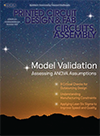SANTA CLARA, CA – DEK International received Intel Corp.’s Preferred Quality Supplier award for outstanding performance in providing products and services.
The company was recognized for its efforts in supplying the chipmaker with printing machines.
DEK was among 44 PQS award winners honored at a celebration in Burlingame, CA.
BANNOCKBURN, IL – Abstracts are sought for next year’s IPC Printed Circuits Expo, Apex and Designers Summit, show organizer IPC said today.
The show will be held in Las Vegas, March 30 to April 3.
Abstracts of 300 words summarizing original and previously unpublished work covering case histories, research and discoveries are being sought for presentations on all electronics manufacturing topics. Submissions should describe significant results from experiments, emphasize new techniques, discuss trends of interest and contain technical and/or appropriate test results.
Proposals are also solicited for full-day and half-day professional development courses on design, PCB and electronic manufacturing processes and materials.
All abstracts and proposals are due July 13. For more information or to submit an abstract or proposal, visit www.goipcshows.org.
ST. PETERSBURG, FL – Jabil Circuit said today its second-quarter earnings dropped 80% because of increased costs and expenses.
ESPOO, FINLAND – Nokia announced it has filed patent counter assertions against Qualcomm for its infringement of six Nokia implementation patents used in Qualcomm GSM/WCDMA and CDMA2000 chipsets. In April, Qualcomm filed a lawsuit in the same Western District of Wisconsin against Nokia.
Nokia says its products do not infringe either of the two Qualcomm patents-in-suit and asserts both patents are invalid.
In previous litigation filings, Qualcomm has sought injunctions against Nokia. Therefore, Nokia is seeking damages and also an injunction against Qualcomm's infringing chipsets.
The implementation patents cited in the Nokia counterclaim relate primarily to multi-band/multi-mode technologies that allow seamless and transparent roaming for consumers, and direct conversion technologies that reduce handset and chipset size, cost and power consumption.
Nokia states Qualcomm has copied these innovations and made them available to its chipset customers.
ATLANTA – PCB East 2008 will take place May 11-16, south of Chicago, UP Media Group today announced.
The show will take place at the Holiday Inn Select & Convention Center in Tinley Park.
Traditionally held in the fall, PCB East now becomes a spring event.
Meanwhile, PCB West 2008 will move to the fall. The date and location will be announced shortly.
PCB East 2007 will take place Oct. 21-26 at the Durham Marriott at the Civic Center in Durham, NC. Visit www.pcbeast.com for more information.
ATLANTA – DownStream Technologies and UP Media Group will present a free one-hour Webinar on streamlining PCB documentation next month.
The Webinar, Streamlining PCB Documentation for Successful Manufacturing, takes place June 20 at 11 a.m. PDT.
The Webinar will demonstrate how BluePrint-PCB can change the way PCB documentation is created by using intelligent design data to automate the PCB documentation process.
Speaker Rick Almeida, cofounder of DownStream, will discuss creating and using templates to quickly populate a documentation set; creating comprehensive PCB fabrication drawings, and implementing engineering change orders.
Project engineers, engineering and CAD managers, and anyone involved with documenting PCB designs are encouraged to attend this online event. Register today at
https://event.on24.com/eventRegistration/EventLobbyServlet?target=registration.jsp&eventid=46652&sessionid=1&key=8D97BB400F5C532CF1EB1F7E73609EEC&sourcepage=register.
UP Media Group publishes Circuits Assembly.
The Webinar, Streamlining PCB Documentation for Successful Manufacturing, takes place June 20 at 11 a.m. PDT.
The Webinar will demonstrate how BluePrint-PCB can change the way PCB documentation is created by using intelligent design data to automate the PCB documentation process.
Speaker Rick Almeida, cofounder of DownStream, will discuss creating and using templates to quickly populate a documentation set; creating comprehensive PCB fabrication drawings, and implementing engineering change orders.
Project engineers, engineering and CAD managers, and anyone involved with documenting PCB designs are encouraged to attend this online event. Register today at
https://event.on24.com/eventRegistration/EventLobbyServlet?target=registration.jsp&eventid=46652&sessionid=1&key=8D97BB400F5C532CF1EB1F7E73609EEC&sourcepage=register.
UP Media Group publishes Circuits Assembly.
Press Releases
- NanoFlowX Announces Strategic Partnership with Bentec Ltd to Accelerate PCB Protection Innovation Across Europe and India
- Strong signal for the industry: productronica 2025 drives positive industry trend
- Sharpen Your ESD Skills: CE3S Announces Desco’s First ANSI/ESD S20.20 Training Series for 2026
- Mycronic Secures Turnkey Solution Order from a Nordic Defense Actor


